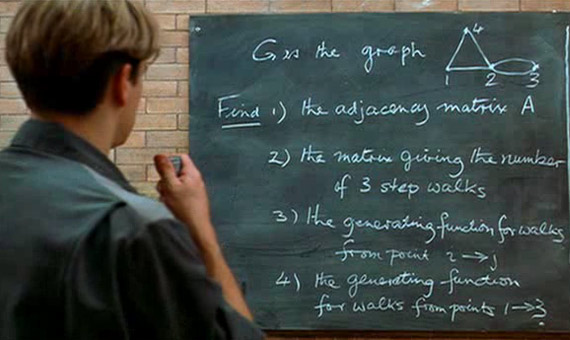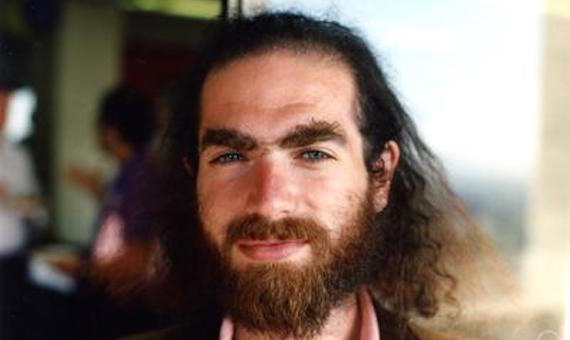In 1939, a mathematics student at the University of California, Berkeley (USA) arrived late for class. Before the end of the lesson, he wrote in his notebook the two problems that the professor had written on the blackboard, assuming that they were the assigned homework. The student took a few days to deliver the solutions, since the task was more difficult than usual. A few weeks later, on a Sunday at 8 am, the student and his wife were awakened by the sound of someone banging on the door of their house. It was the professor, in a state of great excitement; those mathematical formulations written on the blackboard were not exercises for the class, but rather two famous problems of statistics that nobody had been able to solve, until then.

The student was the mathematician George Dantzig, who died in 2005, considered as the father of linear programming and known for his contributions in statistics, computer science and economic analysis. Dantzig himself recounted the story in 1986 in an interview with the magazine College Mathematics Journal. The episode illustrates the aura of legend that surrounds the great mathematical problems and their protagonists; the story is true, although some versions have embellished it, placing Dantzig in a final exam that only he was able to finish.
For some reason, the eccentric mathematicians have popular appeal. Sylvia Nasar, author of the biography of John Nash A Beautiful Mind that inspired the movie of the same title, equates them to rock stars. As an example of rebellion is the case of Russian mathematician Grigori Perelman, who solved the Poincaré Conjecture only to reject the Fields Medal and the prize of one million dollars offered by the Clay Mathematics Institute.

The conjecture proposed by Henri Poincaré in 1904 says that, just as a rubber band around a sphere can shrink until it is reduced to a single point without detaching from the surface, the same applies to a hypersphere in four dimensions; and this, in turn, does not occur with a donut-shaped body. The Poincaré Conjecture is the only solved one of the seven Millennium Problems, each endowed with a million dollar prize by the Clay Institute. Until now, the remaining six have deflected the attacks of the brightest minds of humanity.
But what do these big problems possess that allows them to captivate not only the intellectual effort of mathematicians, but also popular curiosity? What benefits will their solution bring us? “The nature of these problems is that the solution to any of them will likely have profound implications for human life,” says to OpenMind the mathematician and popularizer Keith Devlin, co-founder and director of the Institute for Advanced Research in Human Sciences and Technologies (H- STAR), belonging to Stanford University (USA). Devlin is the author of The Millennium Problems: The Seven Greatest Unsolved Mathematical Puzzles of Our Time (Granta Books, 2004), a book that explains the seven Millennium Problems. For Devlin, of the many mathematical riddles to be solved, “the Millennium Problems that are still unresolved are at the top of the list”.
Among them is the Riemann Hypothesis, referring to the distribution of prime numbers, which become ever more rare as one advances through the list of integers. For its part, the P versus NP problem asks whether, given the solution to a problem that is easy to check, the solution is also accessible. The problem of the Yang-Mills Existence and the Mass Gap refers to the interaction of quantum particles, while the Navier-Stokes Equations describes the motion of fluids. The remaining two problems, both very complex to explain, are the Hodge Conjecture and the Birch and Swinnerton-Dyer conjecture. And finally, off the list of Millennium Problems but very much aired in the media and without proof since 1742, is Goldbach’s Conjecture that proposes that every even number greater than 2 can be expressed as the sum of two primes.
According to Devlin, the solutions to some of these problems could have practical implications: the Riemann Hypothesis houses potential implications for physics and communications technology; P versus NP for industry, commerce and internet security; and the Poincaré Conjecture for the design and manufacture of electronic components. But while for the bulk of ordinary mortals what matters about a question is knowing its answer, Devlin clarifies that this is not the case for the greatest enigmas of mathematics; the key does not lie in “knowing what the answers are,” but rather in “the method of solution in which one would hope to find many benefits for humanity.” “Usually, knowing the answer to whatever mathematical problem has no value other than that of curiosity,” says the expert. “Mathematicians actually have very little interest in the specific answer to a question. Rather, the interest lies in how one reaches that answer.”
By Javier Yanes for Ventana al Conocimiento
@yanes68
Comments on this publication